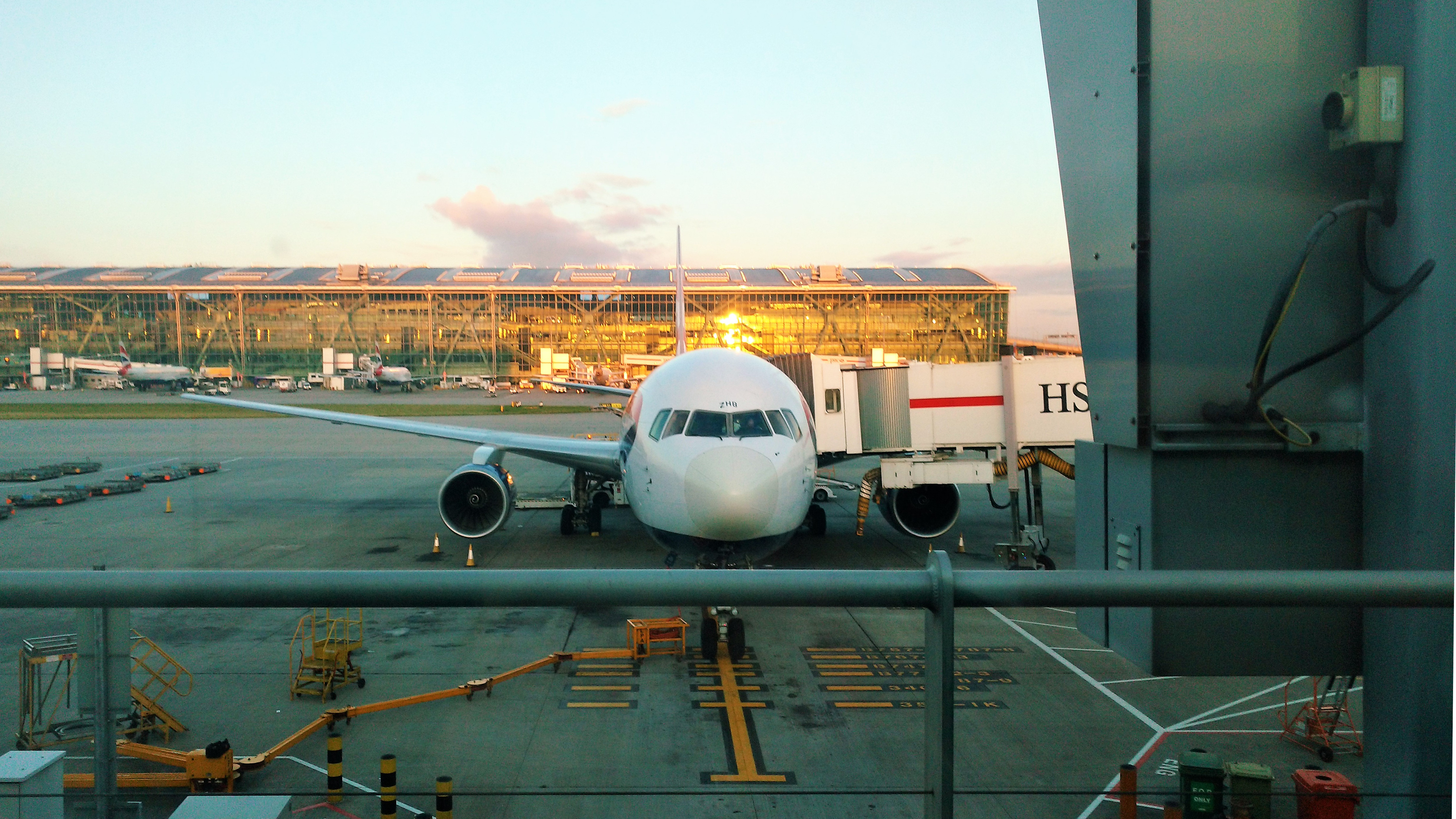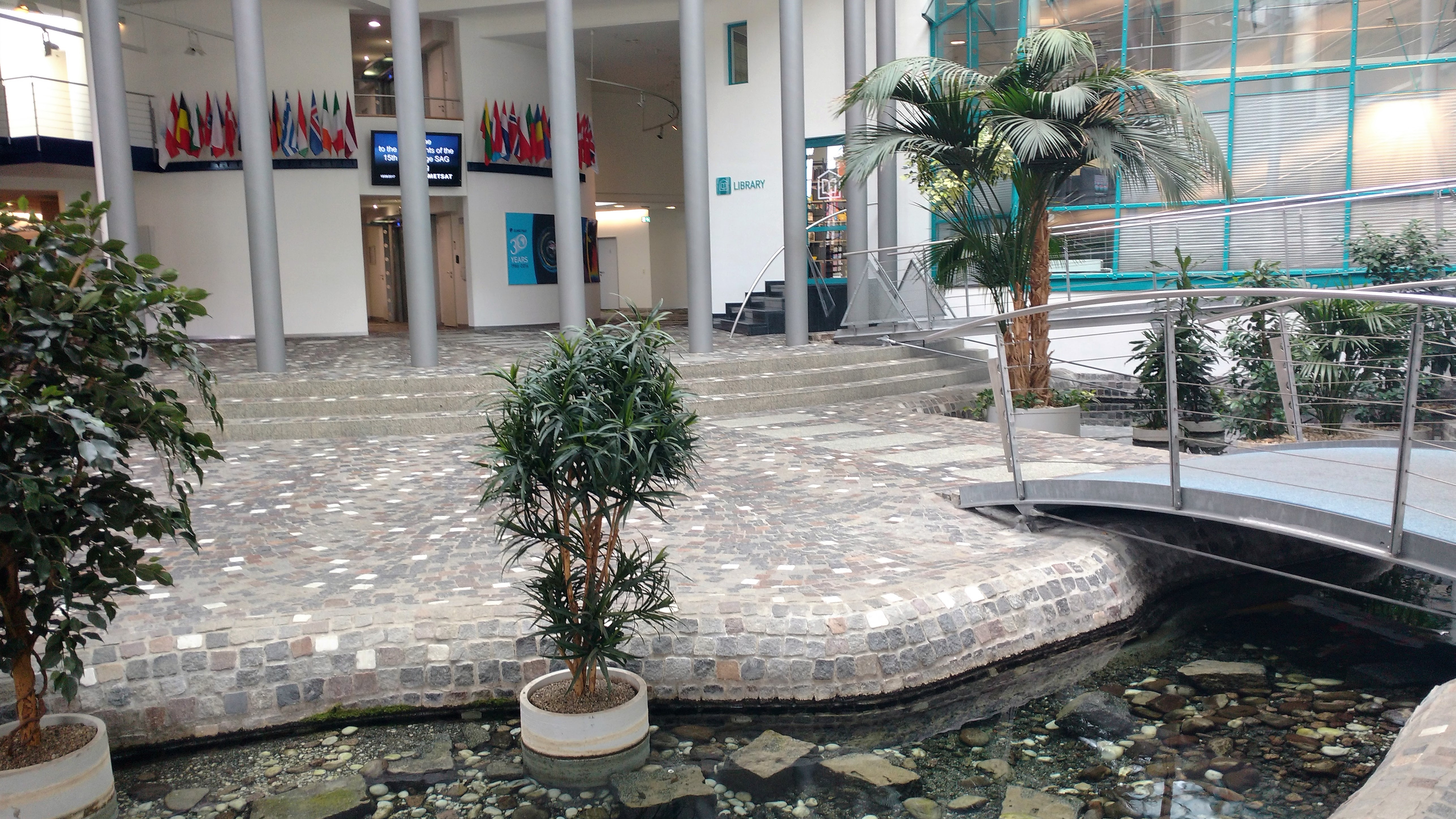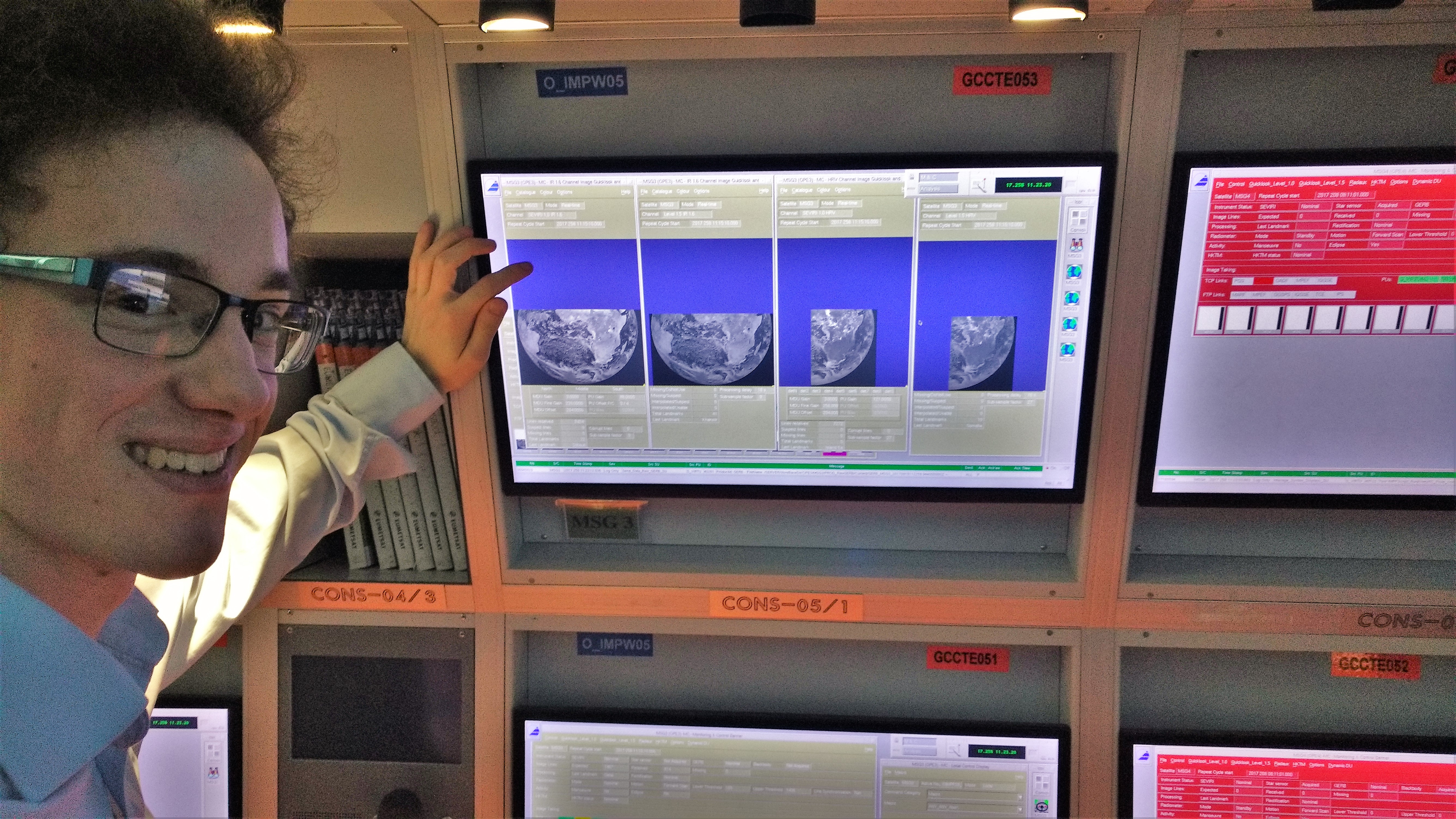EUMETSAT (European Organisation for the Exploitation of Meteorological Satellites) is an international organisation headquartered in Darmstadt, Germany, that operates a fleet of Earth Observation satellites for users in Europe and around the world. On September 15th 2017 I spent a day visiting the EUMETSAT HQ and finding out about what they do and how students and recent graduates can get involved.
I was offered a tour of the HQ and control rooms after contacting EUMETSAT on Twitter about what I thought was a lack of support for younger people to join the organisation. I was quickly proven wrong when I was also sent a link to their Early Career Programme (ECP) for recent graduates. I then also discovered their student internships, which run each year and last for between one and six months.
So as the day of my visit drew nearer, my excitement grew. It was also the final day of NASA’s long running Cassini mission to Saturn, so I had a tinge of sadness as I sat in Heathrow Terminal 5 waiting for my early morning flight to Frankfurt.

About to board my British Airways flight to Frankfurt
Unlike Cassini’s fiery Grand Finale though, my flight was a smooth affair, and I was soon on a train to Darmstadt. When I turned the corner onto EUMETSAT Allee, I immediately knew that this place was something special. In front of me loomed the modern main building in the shape of one of the Meteosat satellites, its antenna reaching impressively close to its lookalike far above in geostationary orbit.
Inside the building was very nice too, with a bridge and small stream running through the well-lit and spacious lobby. After the early start, the first job of the day was to get some lunch. For this I was introduced to some of EUMETSAT’s British engineers and managers. They were all very friendly and interested to know what I’d been doing at university and with my wider activities. It was also interesting to see how staff from many of the 30 EUMETSAT member states were clustered around the canteen.

The spacious lobby in the main EUMETSAT building
Once the satisfying lunch was complete, it was time to begin my tour of the building. Phil Harvey, one of EUMETSAT’s spacecraft operations engineers, took me round and clearly knew a great deal about the spacecraft and the wider organisation.
First up on the tour were the meeting rooms, which are used either individually for smaller meetings, or together for gatherings of the EUMETSAT Council by moving the wall separating the two rooms.
Next, we headed deeper into the building and to the balcony, an area with seating and large satellite models hanging from above. The main distractions though were the Low Earth Orbit (LEO) and Geostationary Earth Orbit (GEO) Mission Control Rooms, which loomed in front of the balcony from behind floor-to-ceiling glass. As Phil described the various instruments and systems of the satellites represented above me, I couldn’t help feeling a strong sense of wonder as I realised that these multi-million Euro machines were controlled from just a few metres away.

Watching new Earth pictures arrive from Meteosat-10
After talking about the spacecraft for a few minutes, it was time to actually enter the GEO Control Room. Having seen panoramic pictures of it on the web, I was somewhat surprised by how small it was, but the huge number of screens was still very impressive. Phil explained that the room is split into two halves, with the left being used for current operations and the right more for training and simulations.
Most of the screens were full of tables of data and parameters about the various satellites controlled from the room, but one stood out from the rest. It showed live pictures of the Earth that were being scanned in line by line, with a new image being completed every five or 15 minutes depending on the configuration of the satellite. Phil explained that this was the only screen in the world where you could see live reception of pictures of the whole planet.
Then, Phil showed me the computer that is used to issue commands to Meteosat 8, the first satellite in the Meteosat Second Generation (MSG), which was launched in 2002. He pointed out the queue of commands and described how when each command is sent, a ping is received at each of four stages: when it is verified by the on-site server, when it arrives at the ground station, when it is transmitted and when it has been executed by the satellite.
[youtube https://www.youtube.com/watch?v=BtzyzSkeODc]
He then gave me the amazing opportunity to send some commands up to Meteosat 8 myself. Phil put some Non-Operational or NOP commands in the queue that I could safely send without risking damage – these commands don’t actuate anything on the satellite, just test the communication link.
Of course, being able to send commands up to a satellite orbiting 35,786km above the Earth and see a few seconds later that they had been received and carried out had me very excited indeed. This really was my spacecraft operations dream in action, and was a tantalising taster of what working in a mission control room would be like.
All too soon though it was time to head back to the lobby, where a member of staff from HR met me to ask a few questions about what I thought of the organisation. I was asked about the EUMETSAT website and its careers pages and I described how I’d used them to explore the Early Career Programme and selection of internships.
Finally though, after a truly amazing trip, it was time to head home. Leaving after a huge thunderstorm had drenched the streets of Darmstadt, I dropped by the European Space Operations Centre (ESOC) on my way back to the train station to for an obligatory selfie in front of the heart of ESA spacecraft operations.

Outside ESOC, ESA’s spacecraft operations hub
The trip back to Frankfurt and then to the airport was nice and easy on the efficient German train network, and my flight was smooth too. Soon then, I was back home, relaxing after what had been a truly extraordinary day.
All in all, what an amazing time I had visiting EUMETSAT! It was really inspiring to get to see inside the heart of a multinational organisation that provides a crucial service to hundreds of millions of people around the world on a daily basis. The operations side of things was really interesting too – it’s not every day that you get to walk around inside mission control and sent commands up to a satellite over 35,000km above you! My thanks go to Valerie Barthmann for organising the trip, Phil Harvey for showing me round and Sean Burns and his colleagues for some very interesting lunchtime conversation.
With EUMETSAT’s position as a key player in providing Earth data to people around the world, and their great working environment, I’ll certainly be keeping a close eye on the opportunities available through their Early Career Programme when I’m coming to the end of my degree next year.
2 Comments
Joshua Bennett · June 17, 2018 at 7:28 pm
I am unashamedly jealous of the opportunities you’ve had! It’s fantastic that EUMETSAT offered you the chance to tour their facilites and for you to have the kind of access they gave you. It’s opportunities like these that can provide young people with the inspiration they need to complete the last step of their formal education and begin a career in a field that is truly beneficial to the both the world and, no less, to themselves. Keep going!
weasdown · June 18, 2018 at 8:19 am
Indeed, it was a fantastic opportunity that I’m very grateful to the team for giving me! And yes, companies across industries should open themselves up more to inquisitive students who are trying to learn about what it’s like to work there.
Comments are closed.